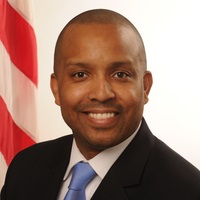
 By Andrew Gettinger MD, Chief Clinical Officer
By Andrew Gettinger MD, Chief Clinical Officer
& Thomas A. Mason MD, Chief Medical Officer, ONC
Twitter: @ONC_HealthIT
The U.S. Department of Health and Human Services (HHS) released a comprehensive strategy to reduce the regulatory and administrative burden related to the use of health IT, including EHRs. Reflective of public comment, the Strategy on Reducing Regulatory and Administrative Burdens Relating to the Use of Health IT and EHRs targets burdens tied to regulatory and administrative requirements that HHS can directly impact through the rulemaking process. The report’s strategies, recommendations, and policy shifts aim to give clinicians more time to focus on what matters – caring for their patients. The report is a collaborative effort between ONC and the Centers for Medicare & Medicaid Services (CMS).
The Burdens That Clinicians Face
Physicians and other healthcare providers have long identified regulatory and administrative burdens as a key contributor to the many challenges they face. They also note these burdens weigh down the overall healthcare delivery system as well. Clinicians have pointed to an ever-increasing and poorly coordinated set of requirements they must meet to deliver and receive payment for patient care.
In many cases, fulfilling these requirements takes a substantial amount of time away from actual care delivery, can interfere with the doctor-patient relationship, and can lead to burnout. The clinical community frequently links the increased burden of meeting these requirements with the tasks and use of health IT, such as EHRs.
Goals to Reduce Burden
Based on stakeholder input, the final report outlines three overarching goals designed to reduce clinician burden:
- Reduce the effort and time required to record health information in EHRs for clinicians;
- Reduce the effort and time required to meet regulatory reporting requirements for clinicians, hospitals, and healthcare organizations; and
- Improve the functionality and ease of use of EHRs.
Reducing unnecessary regulatory burden will alleviate time spent on administrative tasks. For example, during listening sessions with clinicians, we heard criticism that the documentation guidelines for Evaluation and Management (E/M) visits were a source of EHR-related burden and overly complicated. They told us these requirements result in “pajama time,” where physicians spend hours after clinic sessions and on weekends entering data to satisfy billing and quality reporting requirements. Poor usability features within EHRs can further exacerbate this issue, as clinicians find it difficult to navigate long records within the EHR interface. Based on this feedback, the report covers four key areas:
- Clinical documentation
- Health IT usability (or ease of use of health IT tools and systems)
- Federal health IT and EHR reporting requirements
- Public health reporting (including coordination with prescription drug reporting programs and electronic prescribing of controlled substances).
Taking Action on Stakeholder Feedback
We took immediate action to alleviate burden even while finalizing this report. Responding to clinician feedback and input, CMS made historic changes to the more-than-two-decades-old E/M documentation and coding framework that clinicians use to bill Medicare for common office visits. Starting January 2021, clinicians will be able to make better use of their time and strengthen the doctor-patient relationship by spending less time on documenting visits and more time on treating their patients.
The report also highlights that many burdens experienced by physicians and other healthcare providers are multi-factorial. Resolving them will require more than government action. Reducing burden will require action and change at all levels of the healthcare delivery system.
Moving Forward
We plan to continue to reach out and engage the clinician community and other key stakeholder communities as the report transitions into an action plan. With our colleagues at CMS and across the government, we will continue to monitor emerging and ongoing burdens related to the use of EHRs, such as burdens related to EHR inbox management. We will also lead work to enable further automation in health care, with a focus on prior authorization, quality reporting, and other aspects of our current system that can reduce time spent using health IT.
We are optimistic that together, everyone interested in delivering the best care for patients will collaborate to achieve the goal of putting patients over paperwork.
Read the Report on HealthIT.gov
NOTE: Congress, in the 21st Century Cures Act, directed HHS to develop a plan of action to reduce regulatory and administrative burden relating to the use of health IT and EHRs. A draft version of this strategy was released in November 2018 for public comment. The draft, created in partnership with CMS, reflected input we received from an extensive outreach effort including listening sessions, written input, and stakeholder feedback. This updated report reflects the incorporation of further feedback we received during the public comment period.
This article was originally published on Health IT Buzz and is syndicated here with permission.
